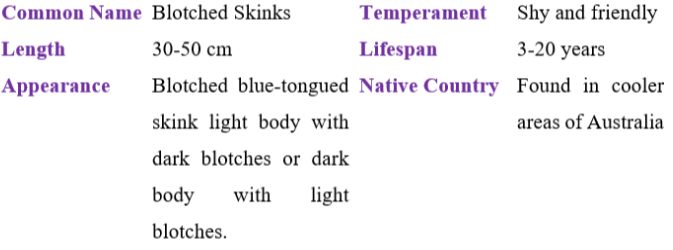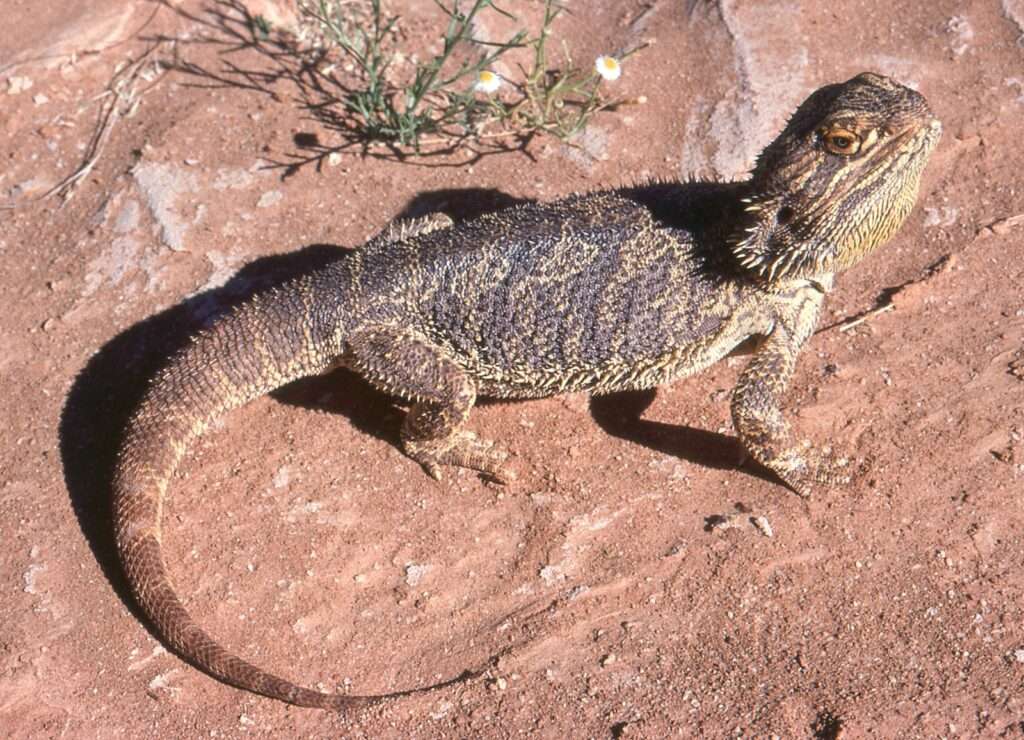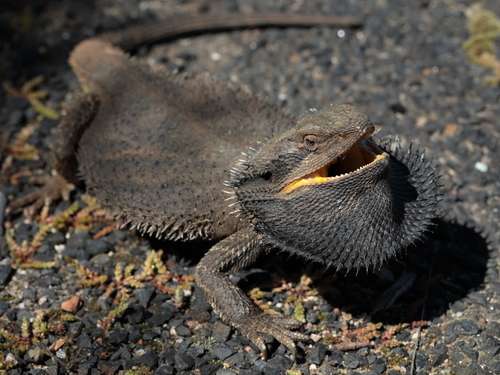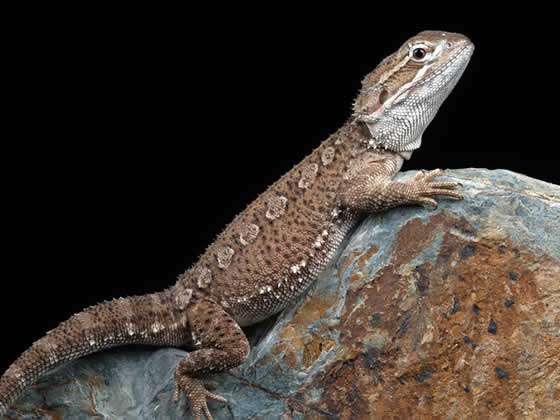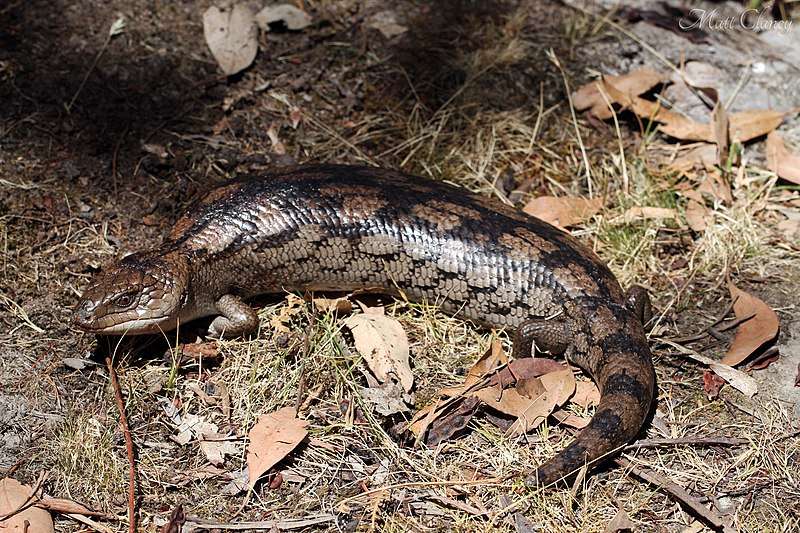
Description:
Scientific name: Tiliqua nigrolutea
Life span: 3-20 years
Blue-tongues are long-bodied animals with a big head, small legs, and tiny toes. The tail normally tapers uniformly to a point and is shorter than the body. Although female blue-tongues grow slightly larger than males, males have a proportionately larger head and stockier body.
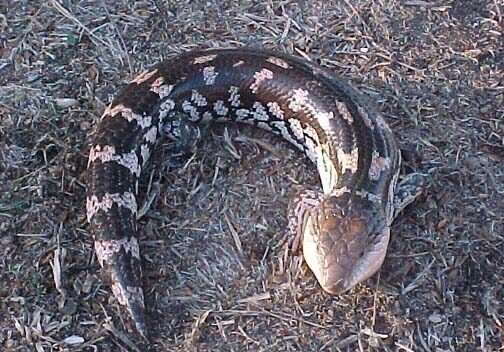
Native Region/Habitat
The geographic distribution of the Blotched Blue-tongue includes Tasmania, Victoria, and the Blue Mountains of New South Wales. In the southern part of their range, they are common in lowland areas, but as they move north, they are gradually confined to higher altitudes.
The habitat of blue-tongues is typically open land with an abundance of ground cover, such as tussocky grasses or leaf litter. They find cover at night in piles of leaves or beneath big ground-based objects like boulders and logs.
Behavior:
Most of the year, blue-tongues live alone, but from September to November, males follow females, and mating takes place. Males may engage in aggressive fighting at this period. Females may bear scrape marks from the male’s teeth after a particularly violent mating. When in danger, blue-tongues swivel towards the danger, open wide, and extend their long, broad blue tongue that stands out sharply against their pink mouth. In addition to the size of the head, this display may deter predators. If the danger persists, blue-tongues may hiss and flatten the body to enlarge themselves. If taken up, a scared blue-tongue may bite.
Care As a pet/In captivity:
Mature blue-tongues thrive in suburban areas with big backyards and lots of cover. They may stay in one spot for many years and quickly adapt to human activity. Favorite hiding places include rockeries, horizontal pipes, and the spaces beneath houses; lawns and sunny walks make good spots for sunbathing. A blue-tongue plant in the garden will assist to reduce the amount of snails and plant-eating insects since gardens typically have plenty of food sources including snails, slugs, and caterpillars.
Table
